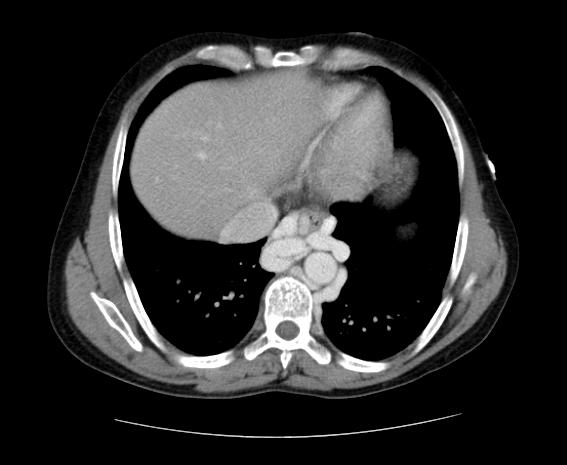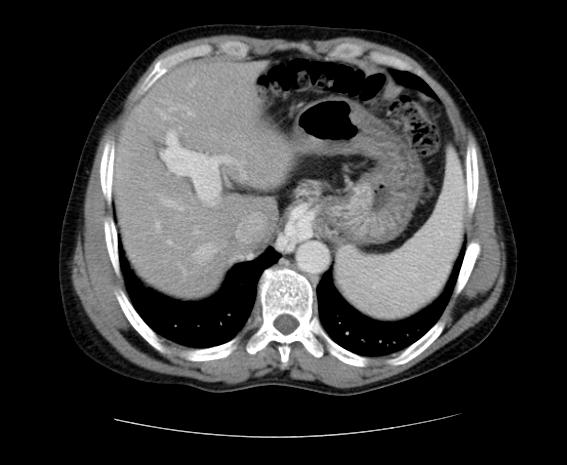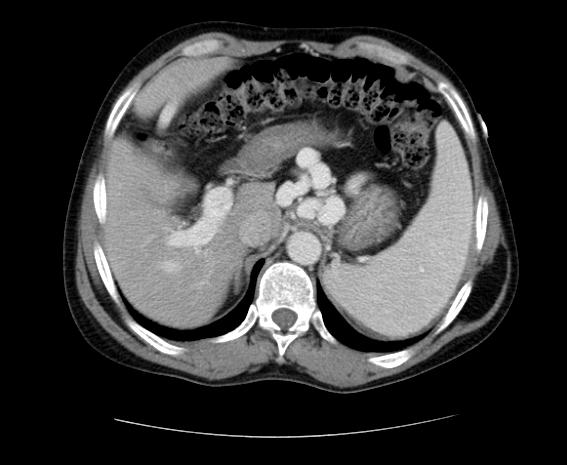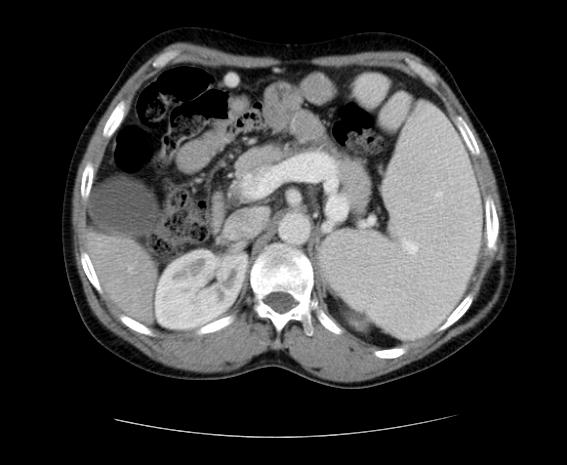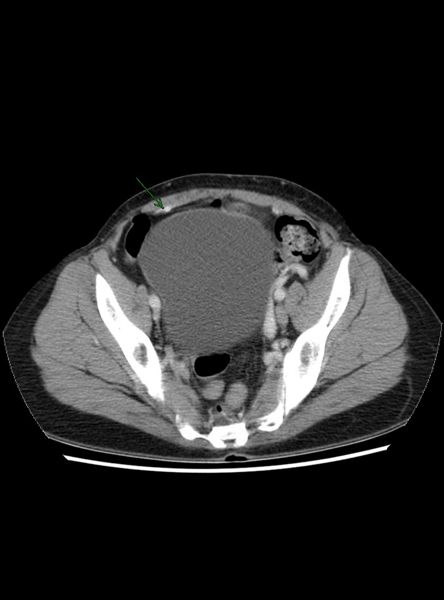Portal hypertension
| Portal hypertension | |
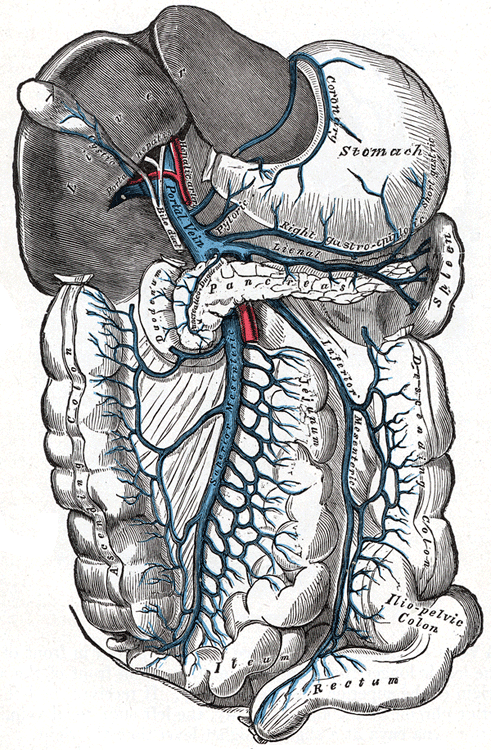 | |
|---|---|
| The portal vein and its tributaries. | |
| ICD-10 | K76.6 |
| ICD-9 | 572.3 |
| DiseasesDB | 10388 |
| eMedicine | radio/570 med/1889 |
| MeSH | D006975 |
Editor-In-Chief: C. Michael Gibson, M.S., M.D. [1],Assistant Editor-in-Chief: Soumya Sachdeva
Overview
In medicine, portal hypertension is hypertension (high blood pressure) in the portal stem which causes an obstruction in the portal vein and its branches. It is often defined as a portal pressure gradient (the difference in pressure between the portal vein and the hepatic veins) of 12 mm Hg or greater. Many conditions can result in portal hypertension. In North America and Europe, it is usually the result of an intrahepatic block due to cirrhosis of the liver. However, in less industrialized parts of the world, climate permitting, the major cause is schistosomiasis.
Pathophysiology
Portal venous pressure is determined by-portal blood flow and portal vascular resistance.Increased portal vascular resistance is often the main factor responsible for it. The consequences of portal hypertension are due to blood being forced down alternate channels by the increased resistance to flow through the portal system. Due to formation of alternate channels initially some of the portal blood and later most of it is shunted directly to the systemic circularion bypassing the liver
Natural History and Complications
There is an increased risk of
- Spontaneous bacterial peritonitis
- Hepatorenal syndrome
- Hepatic encephalopathy
- Congestive gastropathy
- Hypersplenism
- Ascites
- Variceal bleeding
- Renal failure
Causes
Prehepatic
- Congenital abnormalities
- Idiopathic tropical splenomegaly
- Portal vein occlusion
- Splenic Vein Thrombosis
- Umbilical sepsis
Intrahepatic
- Alcoholic hepatitis
- Boeck's Diesease
- Chronic hepatitis
- Cirrhosis
- Fatty liver
- Fulminant hepatic failure
- Hodgkin's Lymphoma
- Osteomyelosclerosis
- Partial nodular transformation
- Schistosomiasis
- Wilson's Disease
Posthepatic
- Cardiomyopathy
- Congestive Heart Failure
- Constructive Pericarditis
- Inferior vena cava obstruction
- Tricuspid insufficiency
Common Causes
Causes by Organ System
Causes in Alphabetical Order
Diagnosis
Physical Examination
Abdomen
- Ascites (free fluid in the peritoneal cavity)
- Hepatic encephalopathy
- Splenomegaly (enlargement of the spleen) with consequent sequestration therein of red blood cells, white blood cells, and platelets, together leading to mild pancytopenia
- portacaval anastomoses (Esophageal varices, hemorrhoids, caput medusae), with esophageal varices posing an ongoing risk of life-threatening hemorrhage.[1]
Investigations
- Barim swallow - presence of varices is seen as filling defects(bag of worms appearnace)
- Upper gastrointestinal endoscopy - presence of cherry red spots.Very reliable
- Ultrasonography - to note the size of liver,spleen,poratl vein,splenic vein and to look for the presence of collaterals
- Hepatic venous pressure drainage measurement - Gold standard for measuring portal hypertension.If ore than 5 mmHg it is considered as significant
- Portal venography - patency and the calibre of portal vein and splenic vein , presence of collaterals
- Liver function tests for liver diseases
- Proctoscopy - rectal varices
- Barium enema - colonic varices
Patient #1
Patient #2: Recanalized umbilican vein
Treatment
Medical management
Treatment with a non-selective beta blocker is often commenced once portal hypertension has been diagnosed, and almost always if there has already been bleeding from esophageal varices. Typically, this is done with either propranolol or nadolol. The addition of a nitrate, such as isosorbide mononitrate, to the beta blocker is more effective than using beta blockers alone and may be the preferred regimen in those people with portal hypertension who have already experienced variceal bleeding. In acute or severe complications of the hypertension, such as bleeding varices, intravenous octreotide (a somatostatin analogue) or intravenous terlipressin (an antidiuretic hormone analogue) is commenced to decrease the portal pressure.
Percutaneous interventions
Transjugular intrahepatic portosystemic shunting is the creation of a connection between the portal and the venous system. As the pressure over the venous system is lower than over a hypertensive portal system, this would decrease the pressure over the portal system and a decreased risk of complications.
Surgical interventions
The most definitive treatment of portal hypertension is a liver transplant.
References
- ↑ Sailer, Christian, Wasner, Susanne. Differential Diagnosis Pocket. Hermosa Beach, CA: Borm Bruckmeir Publishing LLC, 2002:291
External links
Template:Gastroenterology de:Portale Hypertension sv:Portahypertension
